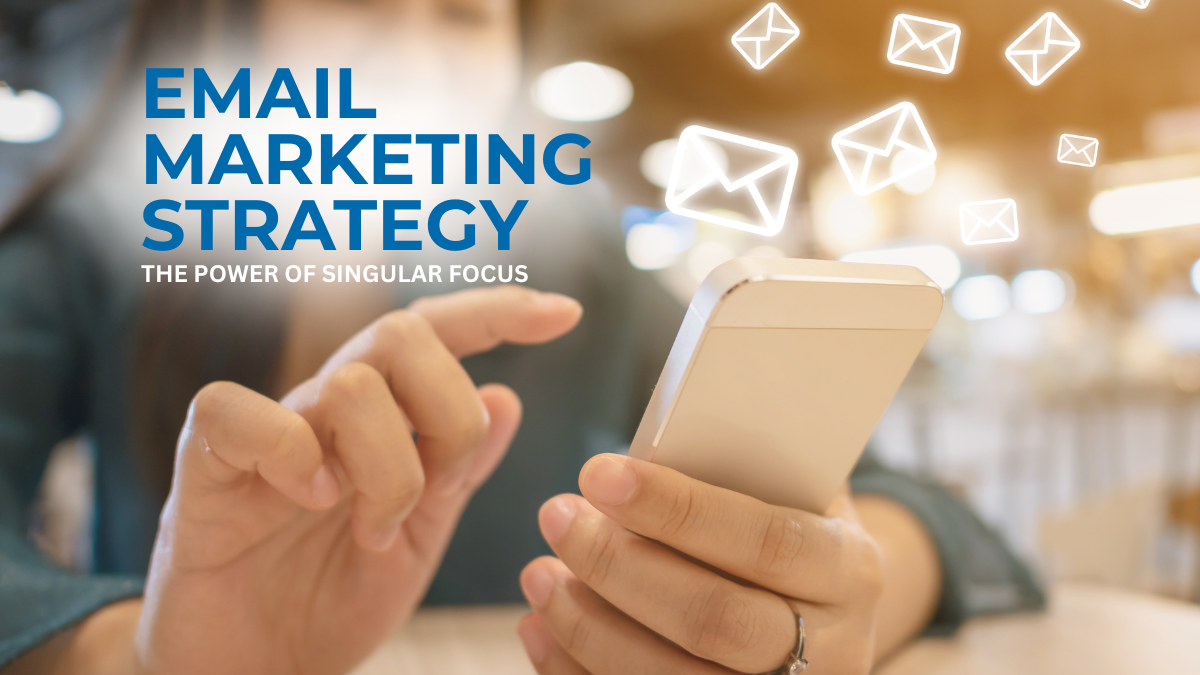How Many Topics Should I Include In Your Client Email Messages?
We’ve all been there. You open an email, and what should feel like a friendly update from a company you’re familiar with turns out to feel more like a storefront with neon lights. A jumble of promotions, announcements, and calls to action leaves you feeling overwhelmed and, ultimately, clicking delete. So, what’s the secret sauce to crafting effective email content that converts without causing inbox indigestion? The answer, in many cases, boils down to a simple principle: less is often more.
While the urge to showcase everything your business has to offer in every single email is understandable, it can backfire spectacularly leading to more “opt-outs” than “click-through.” Think about your email marketing strategy and how it can be received from your subscriber’s perspective. They’re likely juggling a multitude of emails, tasks, and information throughout their day. Bombarding them with too many options dilutes your message, confuses their focus, and reduces the likelihood of them taking any action at all.
The Power in Singular Focus
Imagine receiving an email highlighting one compelling new product with a clear description, stunning visuals, and a direct call to action. The message is concise, easy to digest, and guides you effortlessly towards a specific goal.
This is the power of a singular-focus email marketing strategy.
Here’s why promoting one primary item in your email often yields better results:
- Increased Clarity: A single focus eliminates distractions and ensures your main message gets received.
- Improved Engagement: When presented with fewer choices, subscribers are more likely to engage with the featured item. They don’t have to spend time weighing multiple options. Subscribers instantly understand what you want them to do and often feel more comfortable with at least Browse your offer for more information which can lead to higher click-through rates.
- Stronger Call to Action: A single, prominent call to action related to the main focus is far more effective than a scattered array of buttons.
- Better Tracking and Analysis: When you promote one item, it’s easier to track the email’s performance and understand what resonates with your audience. This more defined path allows you to improve your message and learn to better communicate with your audience.
When Can You Bend the Rules?
Of course, there are situations where strategically including more than one item can be effective. However, this requires careful planning and a clear understanding of your audience. Here are a few scenarios where you might consider showcasing multiple items:
- Promoting a Collection or Package of Items: If you’re highlighting a themed collection of products that naturally complement each other, a brief overview of a few key items can work well. Think “Our Summer Essentials” or “Perfect Pairings.”
- Newsletters with Distinct Sections: In a newsletter format, you might have separate sections for news, product updates, and upcoming events. Each section should still maintain a clear focus within itself.
- Follow-Up Emails: After a subscriber has shown interest in a specific category, you might send a follow-up email showcasing a few related products.
- Value-Driven Bundles: If you’re offering a compelling bundle of products or services at a significant discount, highlighting the value proposition of the entire bundle can be effective.
However, even in these cases, key principles to consider in your email marketing strategy should include:
- Identify Focus: Ensure one item or message remains the primary focus, with others playing a supporting role.
- Keep it Concise: Brevity is still crucial. Don’t overload the email with lengthy descriptions of multiple items.
- Segment Your Audience: Tailor your emails to specific audience segments. Someone interested in new arrivals might appreciate a curated list, while a loyal customer might respond well to exclusive offers across different categories.
The Benefit of List Segmentation
Ultimately, the ideal number of items to promote in your email content depends on your audience, your goals, and the type of email you’re sending. Targeting your message to essentially \”continue the conversation\” or provide an \”if you like that, then you might be interested in this\” strategy with a group of people primed for a conversation from you, will help you not only identify interest in specific offerings but can make your contacts look forward to your conversations and naturally open them because they’re expecting something of interest from you.
Should we A/B Test? A/B tests create a foundation for taking different approaches with your presentation to see what what resonates best with your subscribers. I debate the time and cost of an A/B test. My personal belief is that if you have done your diligence on properly targeting a specific audience, and have prepared an intentional and direct conversation strategy to start or continue a conversation over a set number of emails, running an A/B test can waste time and expectations and postpone your actions. Instead, measuring the results of each intentional email sent gives you the data you need to ask the right questions and adjust, if necessary, what you’re doing. Essentially, they’re first looking for you, not your title. Secondly opened emails give you information – if they click, that’s one answer, if they don’t it could be one of two answers: 1) too busy to deal with right now, or 2) not interested. Evaluate the possibility of why they might not be interested. If it’s worthwhile adjusting then do so. If not, realize that not everyone is going to be interested, and move on and give them the option to opt-out, out, or launch a new conversation.
In conclusion, while the temptation to showcase everything at once is strong, remember that a focused approach often yields the most impactful results. By prioritizing clarity, engagement, and a strong call to action around a single key message, you’ll create email content that your subscribers appreciate and, more importantly, act upon.


